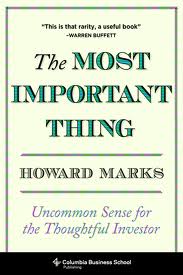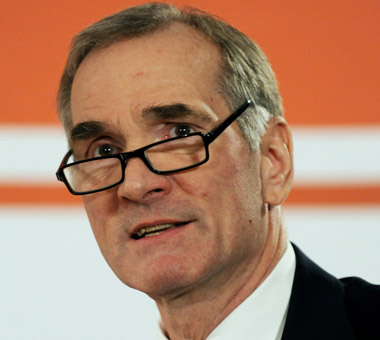The following excerpts are derived from Jack Schwager’s interview with Bill Lipschutz in The New Market Wizards. Lipschutz helped build and ran Salomon’s currency desk for many years – here is a 2006 EuroMoney Article with additional background on Bill Lipschutz. There are number of worthwhile portfolio management tidbits here, mainly the relationship between making mistakes, portfolio sizing & exposure, and controlling one’s psychological reactions.
Mistake, Liquidity, Psychology, Process Over Outcome
“Missing an opportunity is as bad as being on the wrong side of a trade…”
“…the one time since I first started trading that I was really scared…our position size at the time was larger than normal…the dollar started moving up in New York, and there was no liquidity. Very quickly it was up 1 percent, and I knew that I was in trouble [1% of $3 billion = $30 million loss]…It transpired in just eight minutes. All I wanted to do was to make it through to the Tokyo opening at 7pm for the liquidity…By the time Tokyo opened, the dollar was moving down, so I held off covering half the position as I had previously planned to do. The dollar kept collapsing, and I covered the position in Europe…The reason that I didn’t get out on the Tokyo opening was that it was the wrong trading decision...
…That was the first time it hit home that, in regards to trading, I was really very different from most people around me. Although I was frightened at the time, it wasn’t a fear of losing my job or concern about what other people would think of me. It was a fear that I had pushed the envelope too far – to a risk level that was unacceptable. There was never a question in my mind about what steps needed to be taken or how I should go about it. The decision process was not something that was cloudy or murky in my vision. My fear was related to my judgment being so incorrect – not in terms of market direction (you can get that wrong all the time), but in terms of drastically misjudging the liquidity. I had let myself get into a situation in which I had no control. That had never happened before.”
“Q: Let’s say that the dollar started to go up – that is, in favor of the direction of your trade – but the fundamentals that provided your original premise for the trade has changed. Do you still hold the position because the market is moving in your favor, or do you get out because your fundamental analysis has changed?
A: I would definitely get out. If my perception that the fundamentals have changed is not the market’s perception, then there’s something going on that I don’t understand. You don’t want to hold a position when you don’t understand what’s going on. That doesn’t make any sense.”
Liquidity is your friend when it comes to dealing with mistakes.
Mistakes, Psychology, Sizing, When To Buy, When To Sell, Exposure, Expected Return
“When you’re in a losing streak, your ability to properly assimilate and analyze information starts to become distorted because of the impairment of the confidence factor, which is a by-product of a losing streak. You have to work very hard to restore that confidence, and cutting back trading size helps achieve that goal.”
“Q: For argument’s sake, let’s say that the fundamentals ostensibly don’t change but the dollar starts going down. How would you decide that you’re wrong? What would prevent you from taking an open-ended loss?
A: …if the price action fails to confirm my expectations will I be hugely long? No, I’m going to be flat and buying a little bit on the dips. You have to trade at a size such that if you’re not exactly right in your timing, you won’t be blown out of your position. My approach is to build to a larger size as the market is going my way. I don’t put on a trade by saying, “My God, this is the level; the market is taking off right from here.” I am definitely a scale-in type of trader.
Q: Do you believe your scaling type of approach in entering and exiting positions is an essential element in your overall trading success?
A: I think it has enabled me to stay with long-term winners much longer than I’ve seen most traders stay with their positions. I don’t have a problem letting my profits run, which many traders do. You have to be able to let your profits run. I don’t think you can consistently be a winning trader if you’re banking on being right more than 50% of the time. You have to figure out how to make money being right only 20 to 30 percent of the time.”
Very interesting way to think about overall expected return of a portfolio – how to make profits if you are right only 20-30% of the time. This highlights the concept that in investing, it doesn’t matter how often you are right or wrong, what ultimately matters is how much you make when you are right and how much you lose when you are wrong.
Volatility, Exposure, Correlation
“…playing out scenarios is something that I do all the time. That is a process a fundamental trader goes through constantly. What if this happens? What if this doesn’t happen? How will the market respond? What level will the market move to…
…Generally speaking, I don’t think good traders make gut or snap decisions – certainly not traders who last very long. For myself, any trade idea must be well thought out and grounded in reason before I take the position. There are a host of reasons that preclude a trader from making a trade on a gut decision. For example, before I put on a trade, I always ask myself, ‘If this trade does wrong, how do I get out?’ That type of question becomes much more germane when you’re trading large position sizes. Another important consideration is the evaluation of the best way to express a trade idea. Since I usually tend not to put on a straight long or short position, I have to give a lot of thought as to what particular option combination will provide the most attractive return/risk profile, given my market expectations. All of these considerations, by definition, preclude gut decisions.”
Is not “playing out scenarios” within one’s mind a form of attempting to anticipate possible scenarios of expected volatility?
Trade structuring is an under-discussed topic. Many people buy or short things without understanding/considering the true exposure – standalone and/or when interacting with existing portfolio positions. In the words of Andy Redleaf of Whitebox, “The really bad place to be is where all too many investors find themselves much of the time, owning the wrong things by accident. They do want to own something in particular; often they want to own something quite sensible. They end up owning something else instead.”
Sizing, Psychology
“Q: Beside intelligence and extreme commitment, are there any other qualities that you believe are important to excel as a trader?”
A: Courage. It’s not enough to simply have the insight to see something apart from the rest of the crowd, you also need to have the courage to act on it and to stay with it. It’s very difficult to be different from the rest of the crowd the majority of the time, which by definition is what you’re doing if you’re a successful trader.”
Also true for fundamental investors.
Risk, Diversification, Exposure
“Q: How did the sudden demise of your personal account change you as a trader?
A: I probably became more risk-control oriented. I was never particularly risk averse…There are a lot of elements to risk control: Always know exactly where you stand. Don’t concentrate too much of your money on one big trade or group of highly correlated trades. Always understand the risk/reward of the trade as it now stands, not as it existed when you put the position on. Some people say, ‘I was only playing with the market’s money.’ That’s the most ridiculous thing I ever heard.”
Team Management
“…John [Gutfreund of Salomon Brothers] could smell death at a hundred paces. He didn’t need to know what your position was to know…how it was going. He could tell the state of your equity by the amount of anxiety he saw in your face.”
Time Management
“By the way, when I talk about working hard, I meant commitment and focus; it has nothing to do with how many hours you spend in the office.”



















